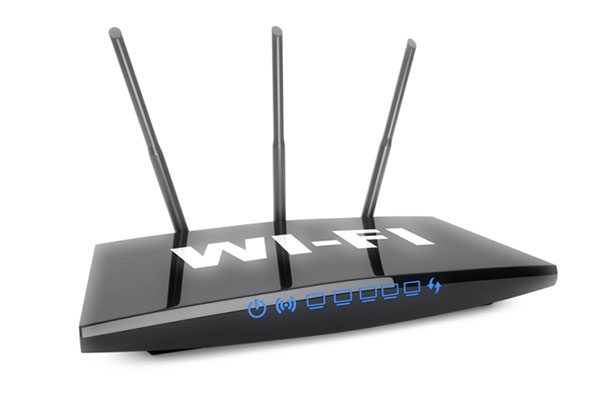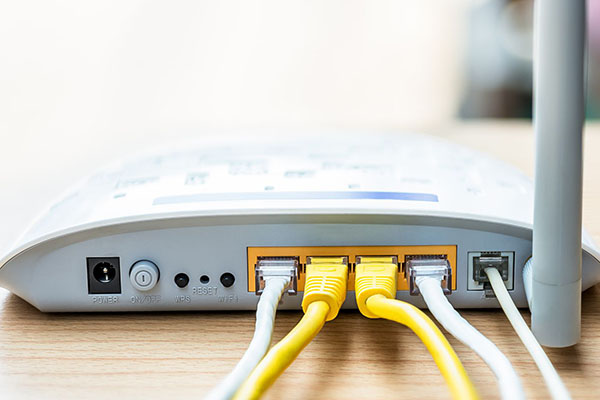It’s terrific having a quick wireless network, but if you only get great speed when you use a wireless client right next to the router and get no signal if you are 15 feet away, then speed doesn’t indicate so much. If your device can hardly open pals’ Facebook pictures when you’re in the same living room as the router, then we’re talking about problems with speed.
In general, speed and range concerns can all be lumped together as performance problems. You desire both your speed and variety to be as robust as possible. There are several aspects that can impact both aspects of efficiency.
You may have a space in your home or workplace that is just too far from your wireless router. If the signals have to bounce around too many corners to reach your wireless devices, that can cause problems (although a technology in newer premium routers called beamforming can help direct a router’s signal to wireless clients).
Interference with the signal can be huge factor in performance, too. If you reside in an apartment building, your house might be swamped with signals from everybody else’s routers. Possibly structural interference is the offender. If your washing machine and dryer are in between your router and your laptop computer, that does not assist.
Possibly it’s the software application you’re utilizing. Routers require software application updates much like everything else– and in some cases the firmware they at first ship with is improved with a later-released upgrade.
These are simply a few of the possible reasons your connection might be bad (or non-existent). There are many ways to extend your wireless signal, and most of them simply involve a bit of tweaking to your wireless network or adding some affordable components. In this short article, we’ll stroll you through ten of the most beneficial repairs for your connectivity woes.
A few of these ideas need no added hardware or software to acquire, while others may require a small or bigger financial investment, depending on the particular performance issue you’re experiencing. We’ll begin with free solutions, then move through the cheap to more pricey enhancements.
1. Modification the channel (totally free)
See how many routers in this area are on channel 6 in the image above? You can change the channel of your router by going into its interface. All routers have different ways to access the interface, so check with your manufacturer on this score.
2. Update router firmware (free)
Consumer products such as home wireless routers, especially older routers, don’t always offer this notification. There is typically a section in the router’s interface for upgrading the firmware. You often have to go to the router manufacturer’s website and search for the firmware (most vendors make searching for firmware pretty easy) and then upload it through the router’s interface.
3. Update adapter firmware (complimentary)
Just like routers, network adapters on PCs and laptops are also subject to firmware updates. Go into your Network settings to find the name of the adapter (via the Control Panel in Windows) and then to that adapter manufacturer’s site to make sure you have the latest firmware.
4. Change position (totally free)
Do you have your wireless router snuggled up against your broadband modem stashed in your home entertainment centre in your basement that’s converted into the household den? Well, move it if you have variety issues. It isn’t really required to have the router in close proximity to your modem. Ideally, a Wi-Fi router must be in a central place. You can acquire custom length Ethernet Feline 5 cable from any computer store (although if you do that, technically this is not a totally free choice) if you need more flexibility in centrally positioning the router.
5. DD-WRT (free)
It’s known to ramp up router performance and extend the feature set beyond what typically comes with most routers. Not every router supports it, but the number of routers that are supported keeps growing. Many manufacturers will not help you troubleshoot router issues once you have DD-WRT on them.
If you have an older, spare router laying around, or want to take the plunge to see if DD-WRT firmware helps your range issues on a newer router, check if it’s supported on the DD-WRT site. Note that it’s not easy to remove DD-WRT from some routers without doing a lot research.
6. Set up a second router as an access point or repeater (inexpensive)
On the second router, you will want to give it the same addressing information as the primary router. If your primary router’s IP address is 192.168.2.1 and its netmask is 255.255.255.0; then you could make the second router’s IP 192.168.2.2 and use the same netmask.
Newer routers make this process easier. If you have a 2nd router that’s just about a years of age, the majority of them can be set to operate in “access point” or repeater mode. Configuring is as simple as clicking a button. Consult your router’s manufacturer or documents.

7. Antennas (cheap)
More recent routers are increasingly produced with internal antennas. There are some that still have or support external ones, and these antennas can often be upgraded. Consider a hi-gain antenna, which you can position so that the Wi-Fi signal enters the instructions you desire. Hawking Technology provides the HAI15SC Hi-Gain Wireless Corner Antenna, which the business claims boosts cordless signal strength from a basic 2dBi to 15dBi. Antennas like these can attach to the majority of routers that have external antenna connectors, and are reasonably inexpensive upgrades.
8. Devoted repeater/extender (more pricey)
Many significant cordless networking vendors offer gadgets that function as repeaters or wireless extenders. While they can extend a Wi-Fi signal, they can be tricky to setup, and can trigger disturbance with the signal. They can likewise be on the more pricey side. Note that if you choose this choice the very best bet is to use an access point made by the producer of your router (see idea number 10 for further details).
9. New router/adapter (more expensive)
How about getting a new router and adapter(s) altogether? Upgrading your home network to one of the current 802.11 ac routers, or an 802.11 n model making use of the 5GHz band ought to give an obvious performance enhancement. 2.4 GHz is stated to in fact have greater range than the 5GHz band, but that only becomes apparent when supplying cordless coverage to huge locations such as university campuses.
In our testing, we’ve discovered that for smaller locations like a common home network, 802.11 n and the 5GHz band kept better throughput than 2.4 GHz with a lot of routers, at higher ranges. This is definitely a more costly option, but if wireless connectivity is important for you, it’s a plausible one.
If you’re pondering an upgrade to an 802.11 ac device, we’ve got a group test of seven such routers you might want to look into (our standards right here show the advantage of air conditioning, and indeed the advantage of 5GHz over 2.4 GHz). Bear in mind that if you get a brand-new router, to take full advantage of the speeds possible you’ll need to update client adapters to the same standard also.
10. Stay with a single vendor (more pricey)
Suppliers are quick to explain that their devices will deal with other vendor’s products. It just makes sense that Cisco network adapters will work better with Cisco routers; Belkin adapters work optimally with Belkin routers and so on. If possible, attempt to restrict your network devices to one supplier– that means not just your router/adapter, but antennas, repeaters and access points.
If the signals have to bounce around too many corners to reach your wireless devices, that can cause problems (although a technology in newer premium routers called beamforming can help direct a router’s signal to wireless clients).
Consumer products such as home wireless routers, especially older routers, don’t always offer this notification. You often have to go to the router manufacturer’s website and search for the firmware (most vendors make searching for firmware pretty easy) and then upload it through the router’s interface.
If your primary router’s IP address is 192.168.2.1 and its netmask is 255.255.255.0; then you could make the second router’s IP 192.168.2.2 and use the same netmask. It just makes sense that Cisco network adapters will work better with Cisco routers; Belkin adapters work optimally with Belkin routers and so on.
- Related post: Best wireless router under 100 dollars




